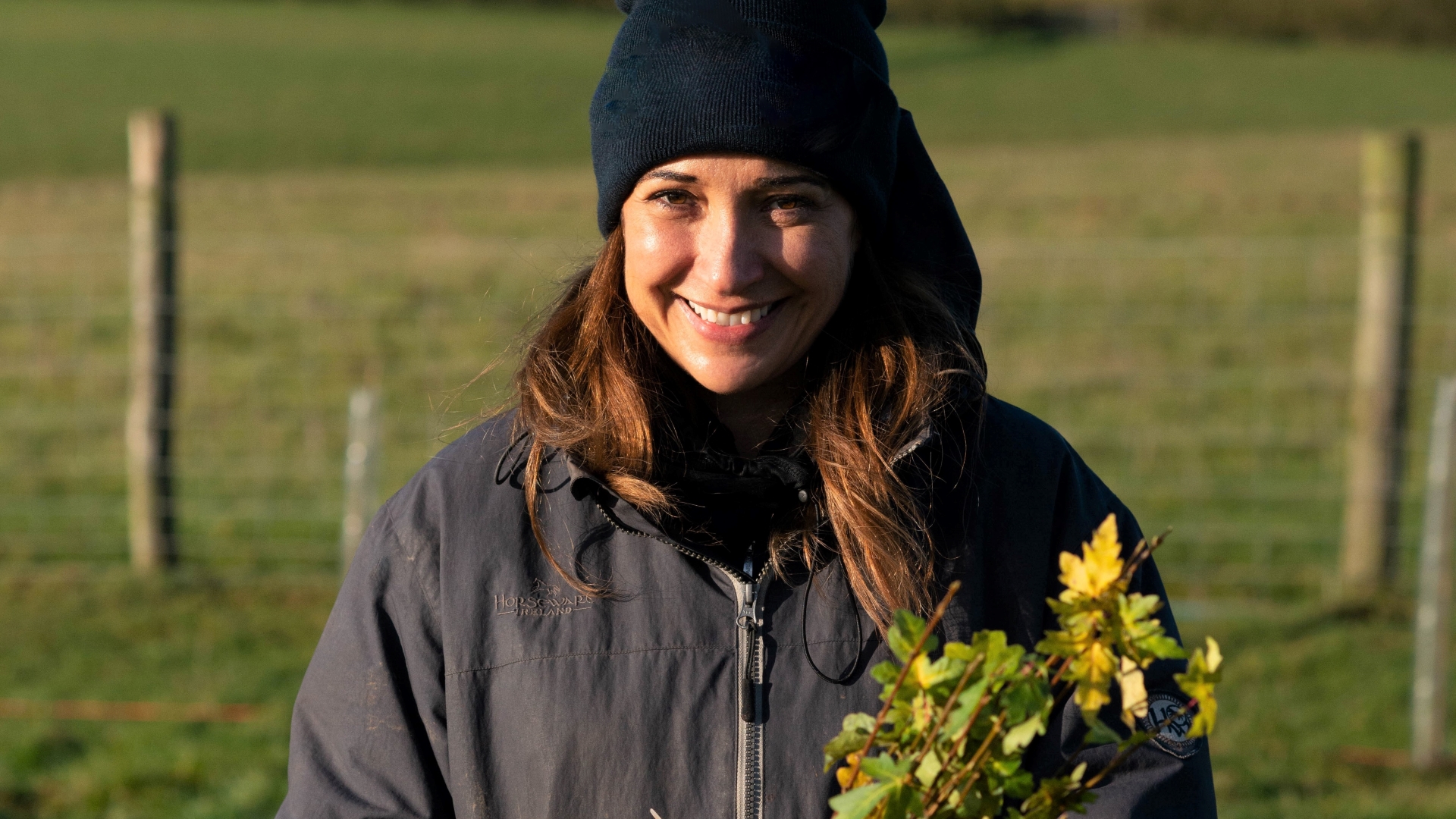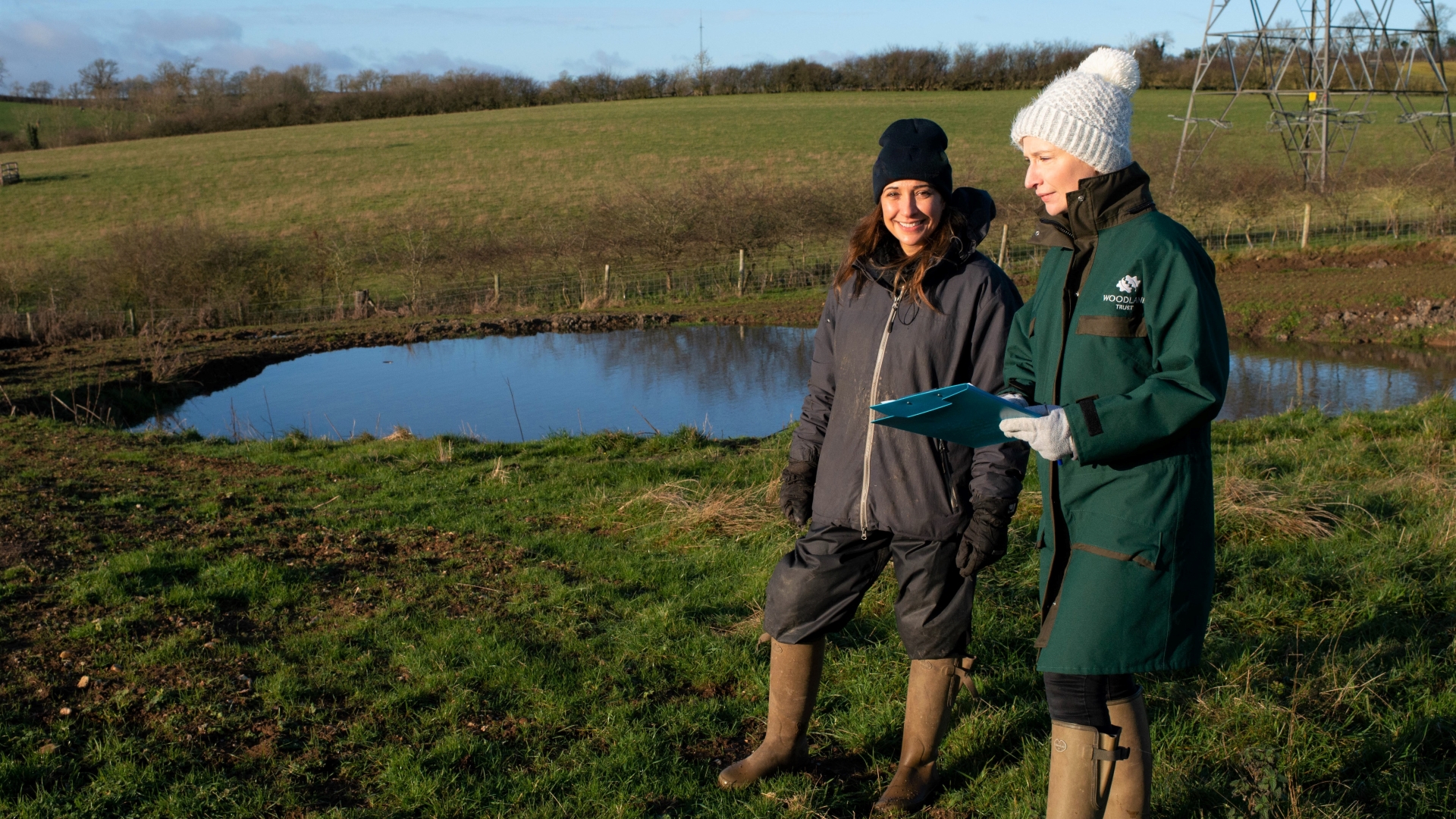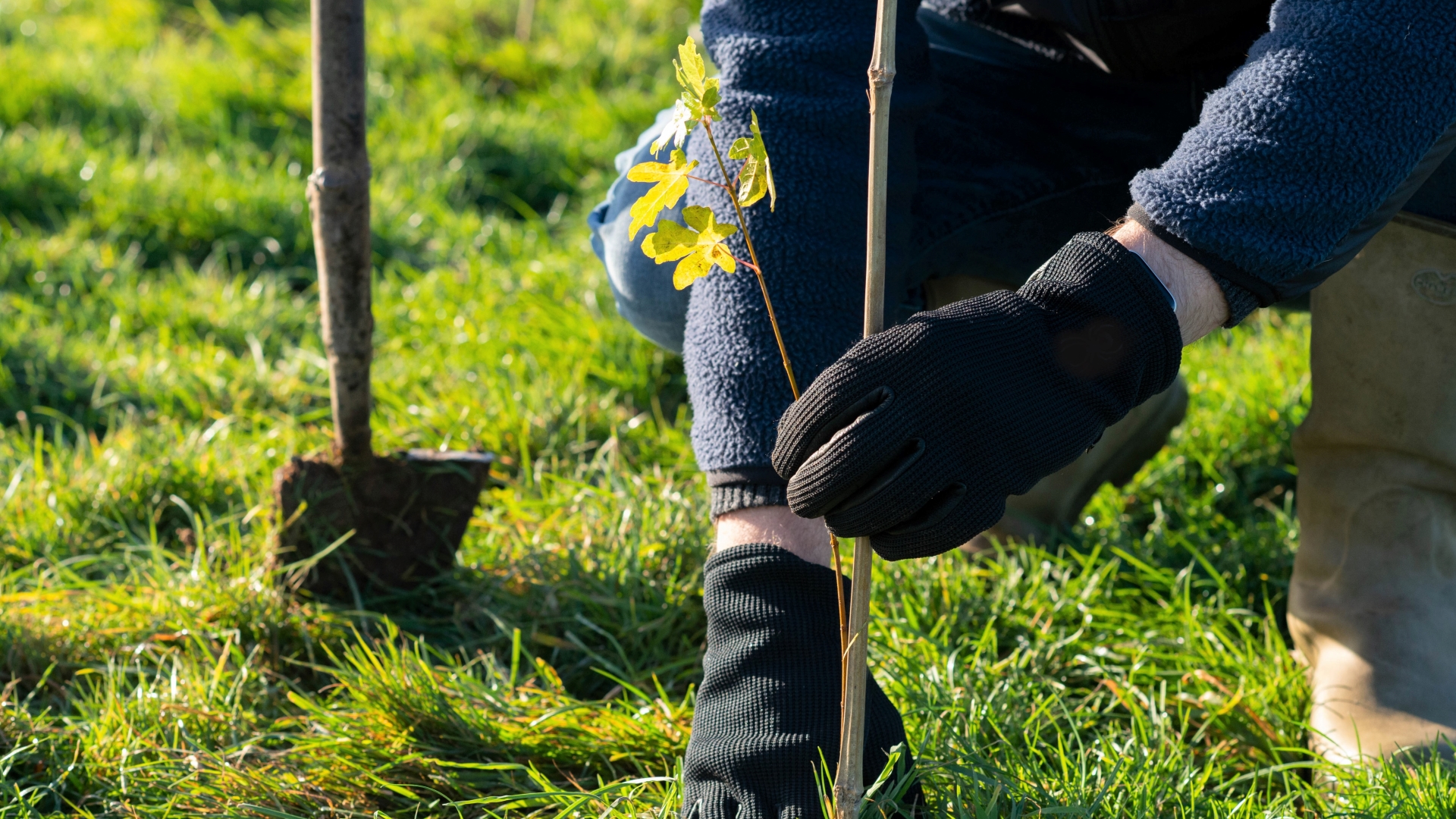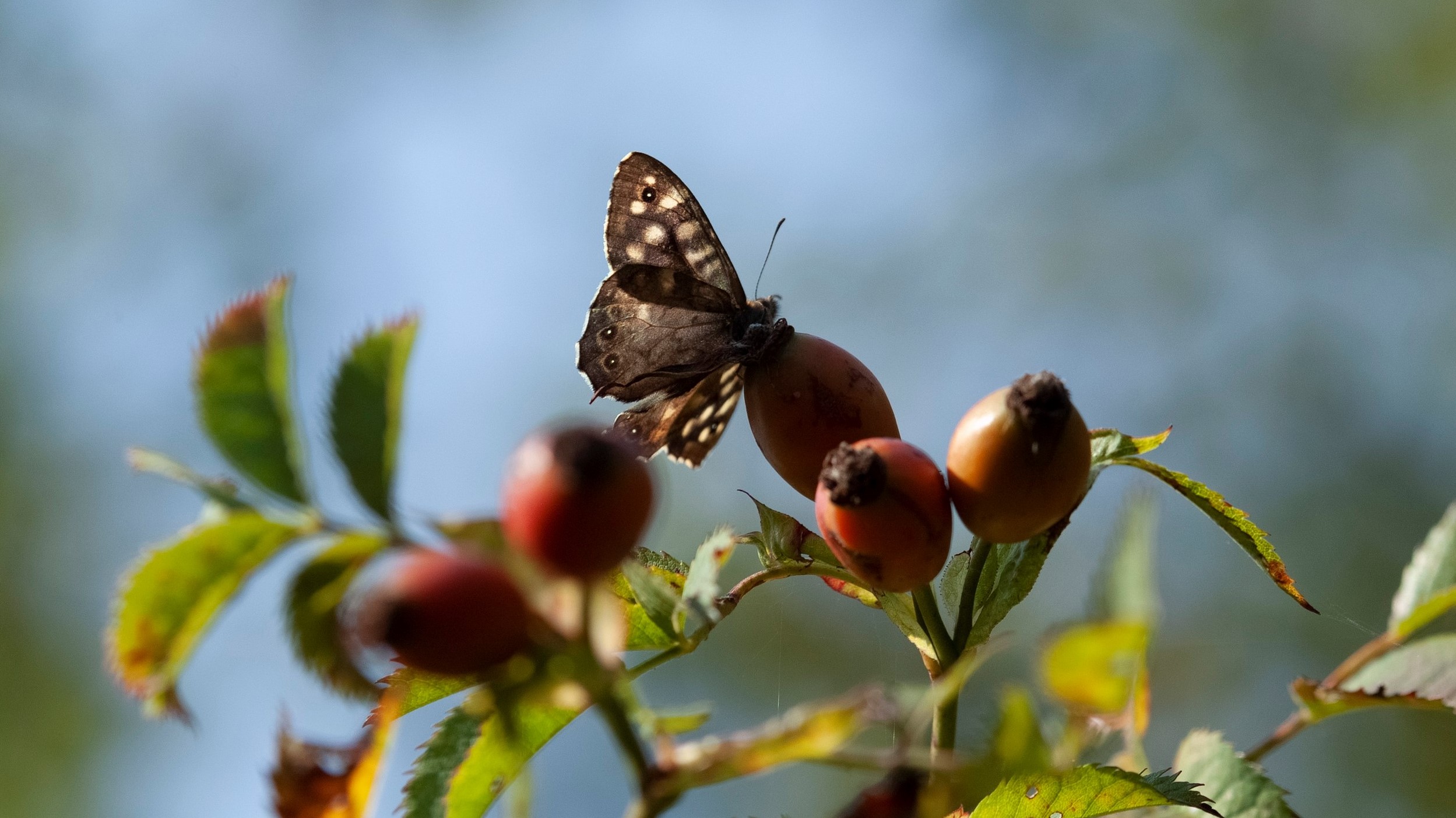How planting trees can fight flooding and improve your soil
Record-breaking rainfall and a changing climate convinced Leicestershire farmer Rachael Spence that she needed to find a way to combat flooding and improve her soil. The answer? Planting more trees, which have helped reduce flood risk and future-proof her land and business.

‘In the last five years we’ve noticed a huge difference,’ says Rachael Spence, who manages 100 acres of land, growing grass and grazing horses on her farm in Leicestershire. Extreme temperatures and increased rainfall are a reality for farmers up and down Britain, who have seen their land blighted by flooding and soil erosion.
Extreme rainfall events are now considered a significant risk across the UK. In 2023, we witnessed the heaviest March rainfall in England and Wales for over four decades, and more recently farmers were left counting their losses again after Storm Henk left vast areas of productive farmland under water. With climate change, such extreme weather events are only expected to intensify.
For Rachael, as for so many others, it’s affected the economic viability of her business, with soil degradation and other environmental harms convincing her it was time to take action. ‘We were looking for solutions that were cost effective and good for the environment too,’ she adds.
Thankfully, there's hope. By harnessing the power of trees and woods, we can bolster our flood defence and mitigate the crippling effects of such deluges — and the MOREwoods scheme can help farmers and landowners get started.

How trees provide a natural solution
Trees help mitigate flooding in several ways. Along riverbanks and on floodplains, they act as a drag on floodwaters, holding back the water and slowing its progress.
By strengthening soil structure, trees increase water infiltration, with rates up to 60 times higher within tree shelterbelts than on adjoining farmland. This is especially helpful where cropping changes and the removal of trees has increased field run-off. The improved absorption reduces run-off by helping water soak deep underground rather than sitting on the surface, where it damages productive land. The enhanced soil structure prevents pollutants and nutrients from leaching out of the soil and into local watercourses too.
Where trees grow, water held in the soil is reduced further by transpiration. Importantly for Rachael — who wanted to increase the size of a pond on her land — their roots help bind soil to sloping ground, like riverbanks and ponds.

The planting plan
Looking for a long-term solution, Rachael turned to the Woodland Trust’s MOREwoods scheme, which provides subsidised trees backed by expert advice for landowners on tree-planting and management.
‘What better way to make a difference than trees?’ she says. ‘A few friends mentioned the MOREwoods scheme so I looked into it. The advice on offer made me choose them, as I knew I needed help to select the right trees and achieve what I wanted.’
The process proved to be very simple. ‘Once my application was in, within two months the Woodland Trust representative came out to see me which was a huge help because I didn't know what variety of trees to plant,’ Rachael explains.
‘But I did have quite a specific need with the flooding and erosion that we have, and they were brilliant, really helpful. Working with the adviser, we decided on planting out one hectare, which equated to 750 trees and 250 shrubs.’

Native species including oak, hornbeam and field maple were planted near the pond which suffered ongoing drainage and erosion issues. These species were chosen for their ability to grow well in wet conditions, the fact that they are easy to grow and maintain, and their value for wildlife. All were sourced and grown in the UK to ensure traceability and reduce the risk of importing pests and diseases.
With the planting done, Rachael’s woodland will start to emerge over the next three to five years, enhancing biodiversity and improving drainage at the site, while making the local landscape more resilient.
‘We’re already noticing a big difference,’ Rachael adds. ‘I’m very excited not only at how it will look in 20 or 30 years’ time, but also the benefits to nature it will bring.
‘If other people have land they are unable to use or problems with drainage, I would highly recommend seeking advice from the Trust.
‘Without the subsidy we could not have planted such a large area. It was crucial to being able to afford to plant out a hectare of land.’

Reaping the benefits
Planting trees is a solution that should be in every farmer’s toolbox. They help boost productivity, the resilience of the land and the health of the environment — with no need for trade off in food production. With generous funding from Lloyds Bank, MOREwoods offers expert advice and funding to make your project a success.
Rachael is one of thousands of landowners who has benefited, with a combined 4,000 hectares of woodland in the ground since 2009. That’s millions more trees creating a brighter, healthier future for businesses, communities and nature.
From protecting crops and livestock to harvesting wood to use as fuel, Woodland Trust experts will provide tailored advice on the best species and methods to reach your goals. They will visit your site, help design your woodland, create a bespoke species mix and arrange tree delivery and protection — and the scheme can help with up to 75% funding.
Find out more about the MOREwoods scheme at woodlandtrust.org.uk/morewoods.
MOREwoods is funded by Lloyds Bank to support sustainable farming.

Exquisite houses, the beauty of Nature, and how to get the most from your life, straight to your inbox.
-
 On the edge of the world, beyond the mainland's most remote village, this self-sufficient dream home is for sale at £395,000
On the edge of the world, beyond the mainland's most remote village, this self-sufficient dream home is for sale at £395,000If you don't fall in love with this house, I don't know if we can ever be friends.
-
 East London's salmon smokehouse full of secrets
East London's salmon smokehouse full of secretsFrom the shores of western Scotland to a smokehouse in London Fields, Max Bergius is bringing fine fish to the capital's best restaurants. So what's the secret?
-
 Jewels of the Mediterranean: Luxury multi-generational villa holidays
Jewels of the Mediterranean: Luxury multi-generational villa holidaysThe Thinking Traveller have some of the finest villas in the Mediterranean on their books for multi-generational holidays. Here are just a few of the highlights.
-
 Code8: Beauty on Burlington Arcade
Code8: Beauty on Burlington ArcadeCome along Burlington Arcade with Hetty Lintell to visit beauty gurus Code8, and try their new Day To Night Foundation.
-
 The gift of growing
The gift of growingEntirely built to suit your needs, a bespoke Alitex greenhouse not only helps you nurture flowers and vegetables, but also offers a tranquil retreat from the pressures of daily life.
-
 The ultimate Canadian train journey
The ultimate Canadian train journeyExperience the spectacular scenery of the Canadian Rockies onboard the luxury and top-tier service of Rocky Mountaineer.
-
 Diamonds are a man’s best friend
Diamonds are a man’s best friendMale interest in jewellery is on the rise, with gypsy and signet rings proving especially popular, according to renowned jeweller Hancocks.
-
 The Art of Lighting: Four of Britain's top designers share their best tips for choosing lighting
The Art of Lighting: Four of Britain's top designers share their best tips for choosing lightingAt a recent panel discussion hosted at Vaughan’s London showroom during Focus/24, interior designers Emma Pocock and Sarah Peake, lighting designer Jo Mann of Lighthouse Designs and Richard Smith of Vaughan shared their top 10 tips on choosing lighting.
-
 The beauty of bespoke: A journey with Julia Lloyd George
The beauty of bespoke: A journey with Julia Lloyd GeorgeGoing bespoke with Julia Lloyd George means getting not just a piece of jewellery, but a lifelong treasure.
-
 Hancocks: Sparkle of genius
Hancocks: Sparkle of geniusHistoric jewellery firm Hancocks, now in its new St James’s home, specialises in old-cut diamonds pieces that gleam and turn heads even in low light.

